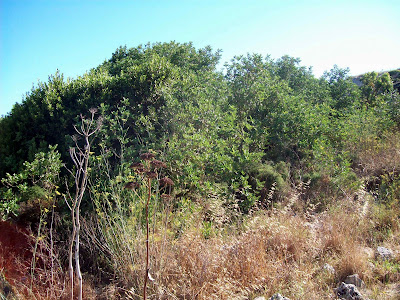
The silicate mineral quartz is, in addition to calcite, one of the commonest minerals on the earth’s crust. An amorphous (non-crystalline) form of this mineral, called variously chert (highly impure) or silex or flint (relatively pure), is found in certain strata of the Maltese rocks.
In a pure state, silicon dioxide is of a transparent colour. This can be seen in crystalline specimens of quartz found in volcanic rocks which are termed ‘rock crystals’. In Malta, nodules or blocks of this mineral contain many impurities mainly consisting of calcium carbonate and other salts; this depends on the parent rock in which they form and results in different colours and varying degrees of translucence.
In the Upper Coralline Limestone Formation, nodules of chert are highly calcareous, opaque and microcrystalline in nature. The impurities in these nodules impart a layered dark brown or charcoal colour. Such nodules are common at the Upper Coralline Limestone of Xemxija and Mistra.
Middle Globigerina Limestone outcrops in Baħrija and Mtaħleb contain usually large blocks of light greyish or khaki chert that intergrades with the limestone and fractures very easily (picture above). Very thin sections of this material allow light to pass through. The parts remaining embedded in the bedrock protrude out and are visible as slightly darker patches against the white limestone.
Middle and Lower Globigerina outcrops in north-central Malta (Mrieħel to Msida) also contain chert, albeit in a the very different form of small to medium-sized nodules. These are somewhat darker in colour, and correspondingly, the silicate material found here is of a light brown to reddish colour.

















































